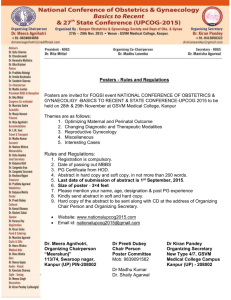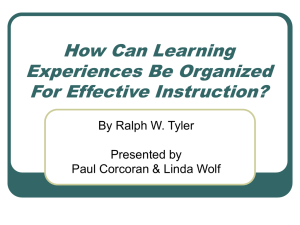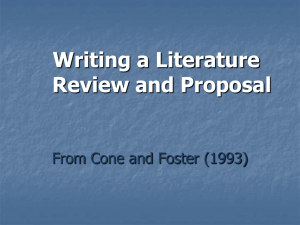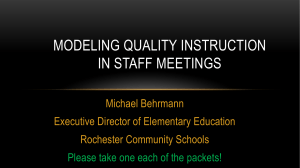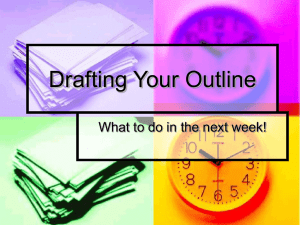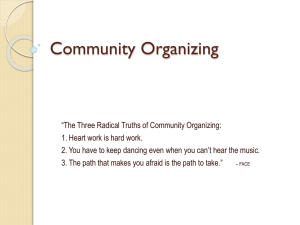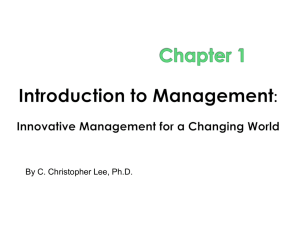Chapter 7
advertisement
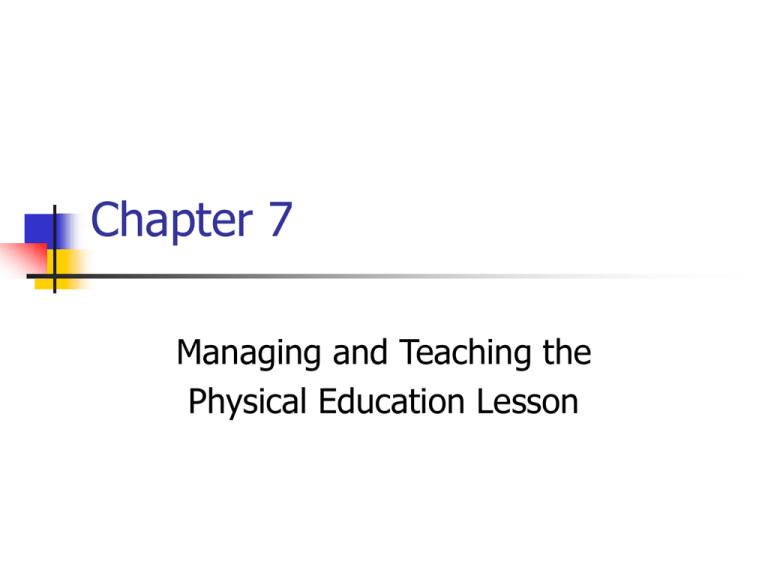
Chapter 7 Managing and Teaching the Physical Education Lesson Chapter objectives Identify various teaching styles and strategies Provide examples of feedback helpful in improving student skills Effectively organize and supervise students Discuss discipline strategies and ideas Express key elements for nurturing a caring class environment Organizing and Teaching the Lesson Content Teaching students in the movement setting involves elements not necessarily found in the regular classroom. Challenges of the typical PE class include: Increasing movement time for the child while decreasing managerial time Maximizing movement time for all children, including lowskilled students and students with disabilities Managing behavior problems exhibited by students Activity time We need to be aware of wait time for activity. Strive to increase movement time, manage behavior and provide feedback as quickly as possible. Organizing and Teaching the Lesson Content Organizing the PE Lesson Content Introductory activity 2 minutes in length Allows immediate activity to occur upon entering gym Gets the body ready to participate in activity Lesson focus activities 20 minutes in length Movement form taught comes from the yearly plan Activities relate to the day’s lesson objectives Physical fitness activity 5 minutes in length Activities improve some component of physical fitness Ending activity 1-2 minutes in length Brings closure to the lesson Organizing Students for Activity Common Organizational Routines Entering the gymnasium Getting drinks of water Using the restroom during class Getting the attention of students Distributing and collecting equipment Handling emergency situations (including injuries) Leaving the gymnasium Organizing Students for Activity Using Routines to Reduce Management Time Just establishing routines does not reduce management time. Students must learn to implement the routines quickly and appropriately Teach the routine to the students Practice the routine Use the routine consistently Review the routine periodically It is also helpful to proceed quickly between activities (fast pace) Organizing Students for Activity Supervising Class Activities Position yourself to keep all students in view Move around the perimeter of the space Scan frequently to detect problems early Watch everyone all the time Off task behaviors These behaviors will occur, no matter how hard we try. Be prepared to adjust teaching strategies. Examples-move students to wall, back to start, pinpoint positive behaviors Avoid yelling, or negative comments Organizing Students for Activity Instilling Safety into Every Lesson The teacher thinks about and plans for safe activity when preparing each lesson By examining the appropriateness of activities included in the lesson By specifying safety procedures in each written lesson plan Detailed safety information is presented in Chapter 11. Helping Students Choose Responsible Behavior Establish a Caring Classroom Community The teacher establishes a relationship with the students by: Developing ways to get to know your students on a personal level Developing ways to share “your story” with your students Making the classroom a friendly place Teaching students to solve their own behavior problems Allowing students to suffer the natural consequences of their actions Not taking student misbehavior as a personal affront Is based on the premise that students and teachers are partners in the learning process Canter’s Assertive Discipline Model 1. 2. 3. 4. All students can behave responsibly. Firm control is fair. Reasonable expectations should be clearly communicated. Teachers should expect appropriate behavior and receive parental and administrative support. Model continued 5. Appropriate behavior should be reinforced; inappropriate behavior should have logical consequences. 6. Logical consequences should be clearly communicated. 7. Consequences should be consistently reinforced. 8. All verbal and nonverbal communication should be firm with eye contact. 9. Teacher should mentally practice expectations and consequences to insure consistency. Example of consequences 1st time child breaks a rule-warning 2nd time-5 minute time out 3rd time-10 minute time out 4th time-teacher calls parent 5th time-child sent to principal Good behavior all week earns 10 minutes of free time or a tangible reward (sticker)



